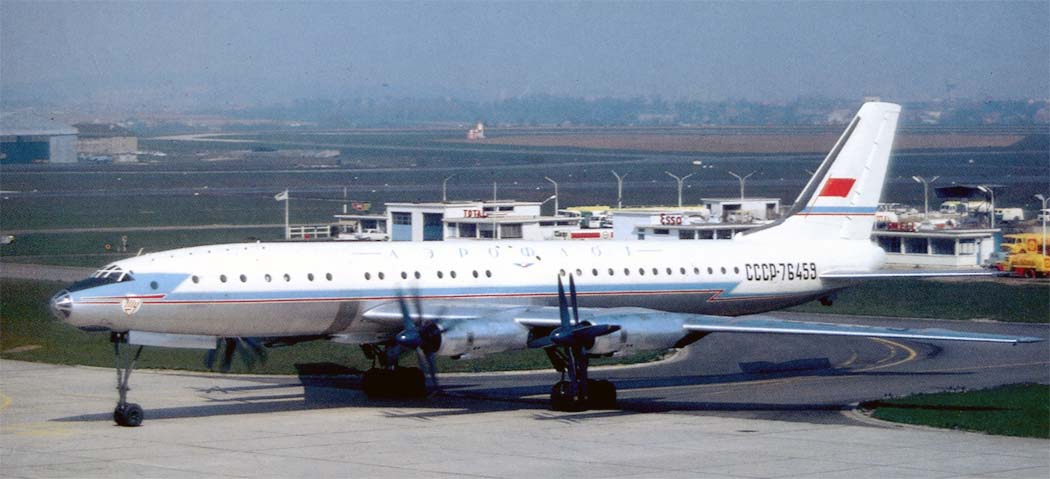

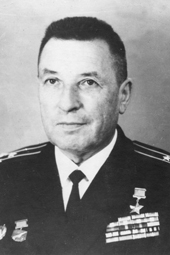
The flight crew for these records were Tupolev Design Bureau senior test pilot Colonel Ivan Moiseevich Sukhomlin, Pilot, and Colonel Boris Mikhailovich Timoshok, Co-Pilot, and four others.
On 1 April 1960, Colonel Sukhomline flew the Tu-114 to set another seven speed records over a 2,000 kilometers course, at 857.277 kilometers per hour (532.687 miles per hour), while carrying a 20,000 kilogram payload (44,092 pounds).³
On 9 April, Colonel Sukhomlin and co-pilot Konstantine Sapielkine flew the Tu-114 over a 5,000 kilometer closed circuit, again with a 25,000 kilogram payload, at an average speed of 877.21 kilometers per hour (545.07 miles per hour). Four more FAI records were set.⁴
These are the fastest speed records ever established for any propeller-driven airplane. The records were retired by the FAI due to changes in rules.
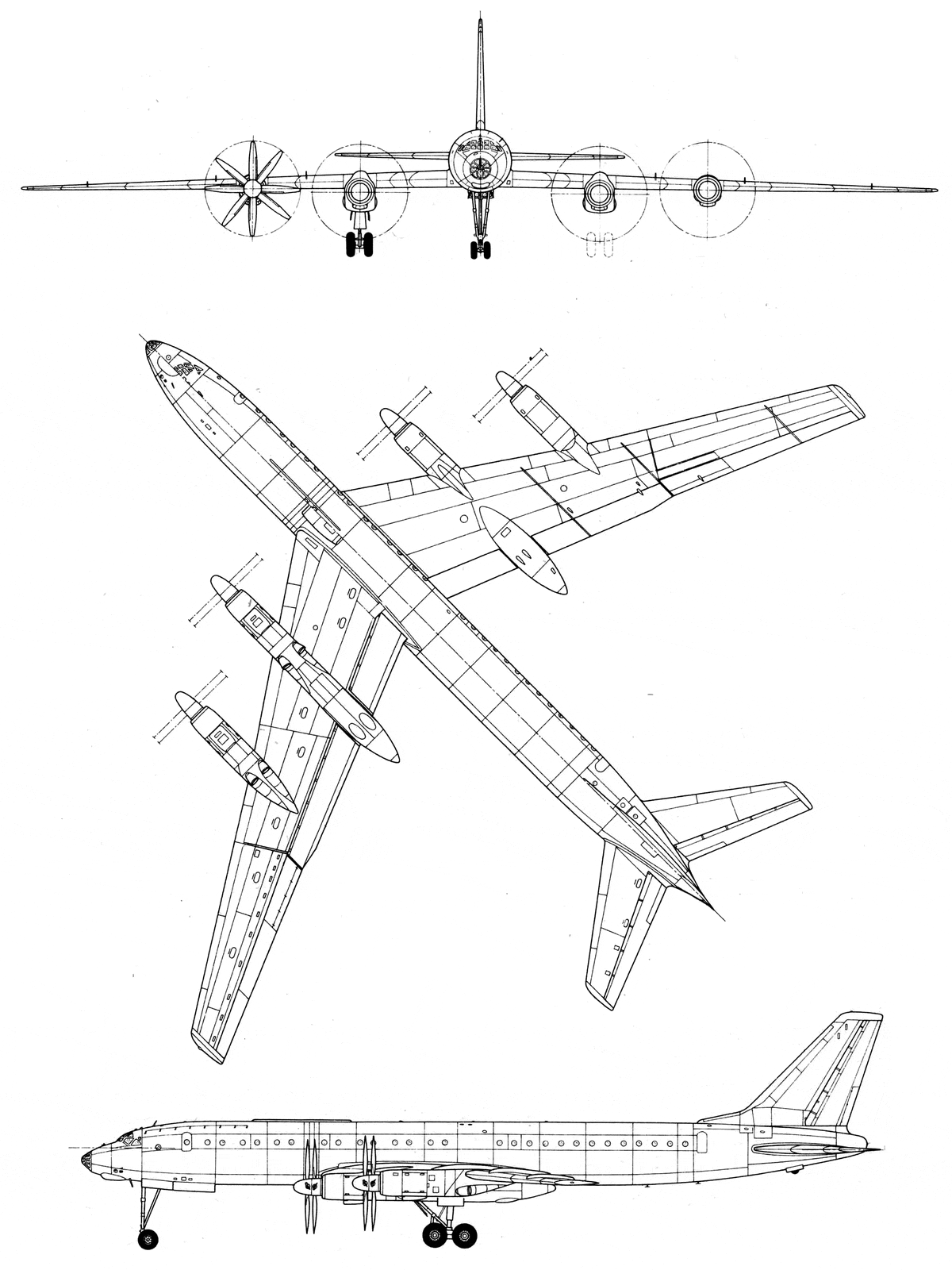
The record-setting Tu-114 was the second production airliner.

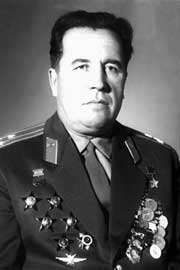
The Tu-114 made its first flight 15 November 1957 under the command of Colonel Alexei Petrovich Yakimov, and began regular service with Aeroflot 24 April 1961.
The Tu-114 is 54.10 meters (177 feet, 6 inches) long, with a wingspan of 51.10 meters (167 feet, 8 inches) and overall height of 15.50 meters (50 feet, 10 inches). The wings are swept aft to 35° at ¼-chord, and they have significant anhedral. Total wing area is 311.1 square meters (3,348.7 square feet).
The airliner’s empty weight is 93,500 kilograms (206,132 pounds) and maximum takeoff weight is 179,000 kilograms (394,628 pounds).
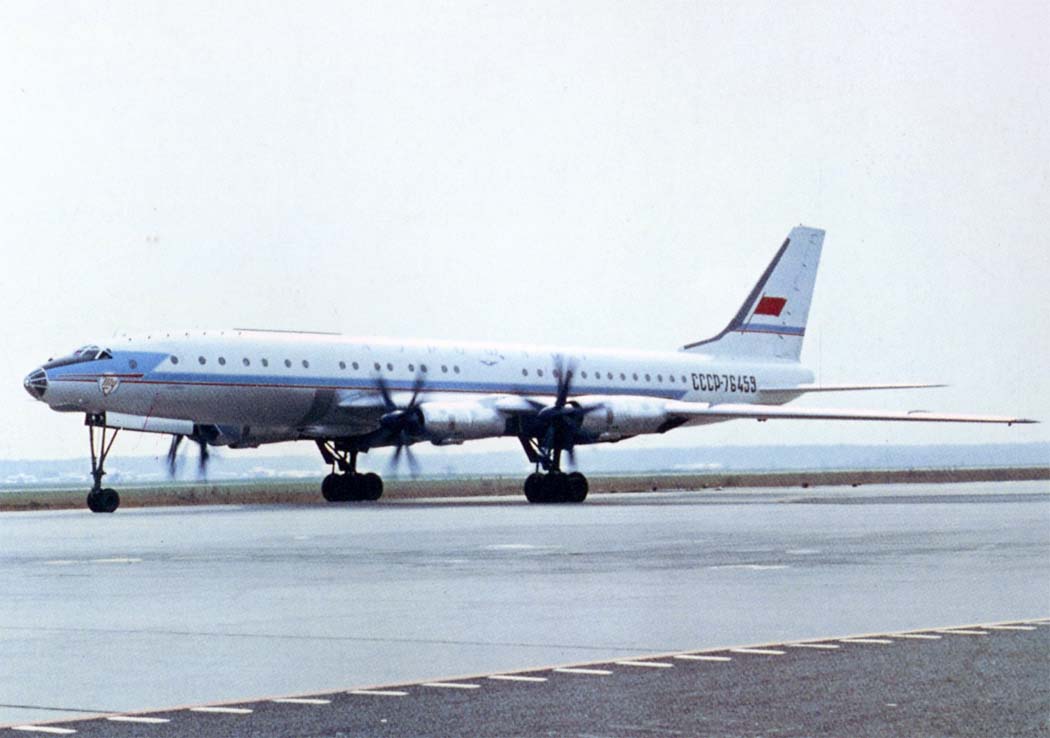
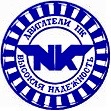
The Tu-114 had a cruise speed of 770 kilometers per hour (478 miles per hour) at 9,000 meters (29,528 feet) (0.70 Mach), and a maximum speed of 894 kilometers per hour (556 miles per hour) at 8,000 meters (26,247 feet) (0.80 Mach). The airliner has a practical range of 7,000 kilometers (4,350 miles) and maximum ferry range of 8,800 kilometers (5,468 miles). The service ceiling as 12,000 meters (39,370 feet).

The Tupolev Tu-114 was produced from 1958 to 1963, with 32 built. They were in service until 1976.
CCCP-76459, the world-record-setting airliner, was displayed at Novogorod Airport, Veliky Novogorod, Russia, in 1977. It was destroyed by fire in 1990.
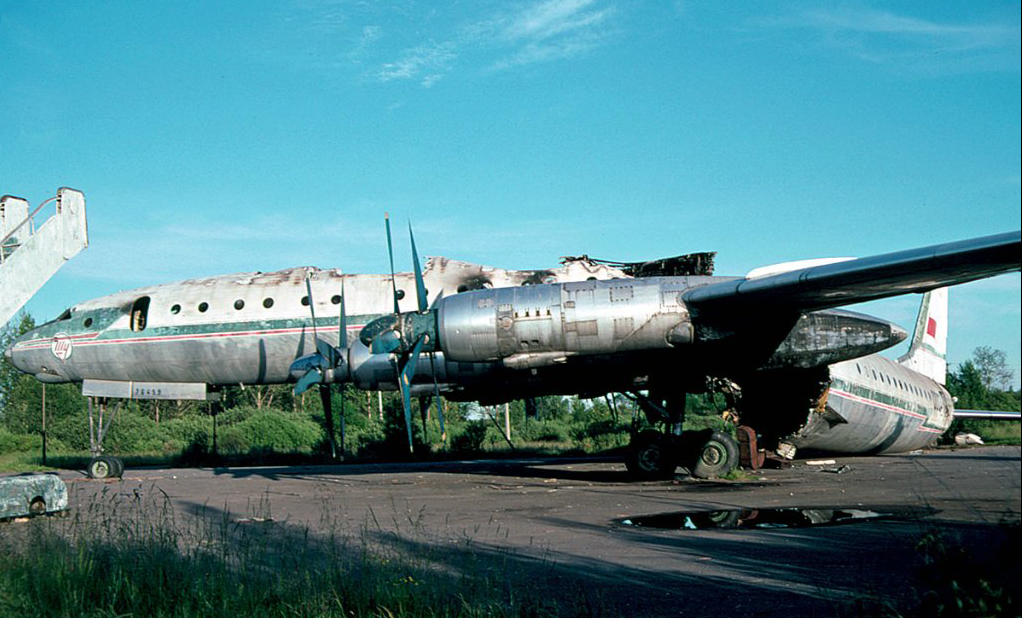
An interesting 10-minute 1959 color film about the prototype Tu-114 Rossiya can be viewed on YouTube:
¹ The Sternberg Point Observatory, also known as the Sternberg Astronomical Institute (Государственный астрономический институт имени Штернберга), is located in Moscow, Russia.
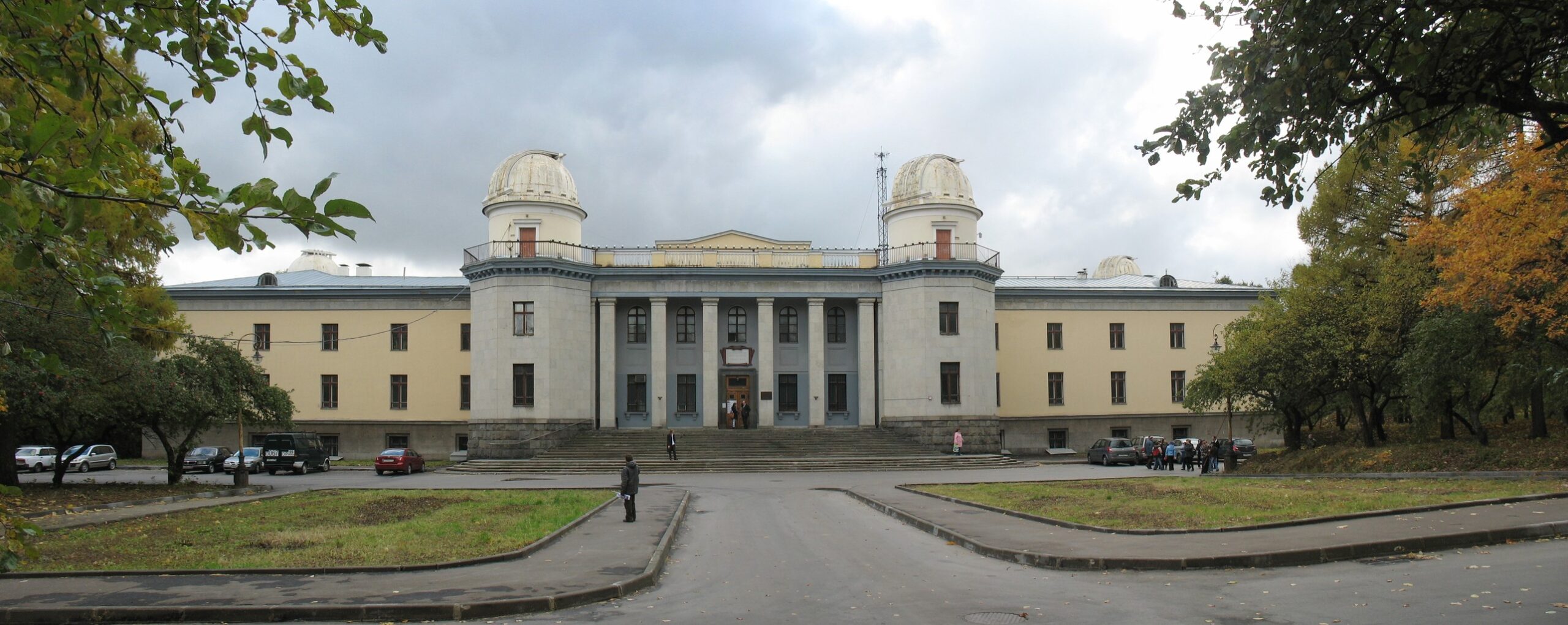
² FAI Record File Numbers 8125, 8126, 8127, 8128, 8129, 8130, 8131 and 8880: 871.38 kilometers per hour (541.45 miles per hour)
³ FAI Record File Numbers 8133, 8134, 8135, 8136, 8137, 8138 and 8139: 857.277 kilometers per hour (532.687 miles per hour)
⁴ FAI Record File Numbers 3663, 3664, 3665 and 3666: 877.21 kilometers per hour (545.07 miles per hour)
© 2019, Bryan R. Swopes
I’d love to see a comparison of the TU-114 with the Constellation. Size, engines, operating envelope, pe4formance, everything.
I think passengers were issued ear protection as the plane was notoriously and wildly noisey.
Like got a lot better gas mileage than the 707 though.
https://en.wikipedia.org/wiki/Lockheed_L-1649_Starliner#Specifications_(L-1649A)
https://en.wikipedia.org/wiki/Tupolev_Tu-114#Specifications_(Tu-114)
The props were contra-rotating, not counter-rotating. Contra-rotating means props rotating in opposite directions on the same axis (coaxial). Counter-rotating props rotate in opposite directions but not on the same axis. The P-38 had counter-rotating props.
Thank you, George.
The listed empty weight and max takeoff weight in pounds appear to be incorrect.
Sorry, but what article are you referring to? The one for 24 March 1960 does not list any weights.
Tu-114 –
“The airliner’s empty weight is 93,500 kilograms (42,411 pounds) and maximum takeoff weight is 179,000 kilograms (81,193 pounds).”
Thank you, I will fix it.
What a fantastic aircraft. An imposing yet beautiful beast. I love the story about when Krushchev came to the states in this, and the air stairs weren’t tall enough to get to the door. They had to rig up some ladders to reach it! Great article, as always Bryan.
Thank you, Pete.